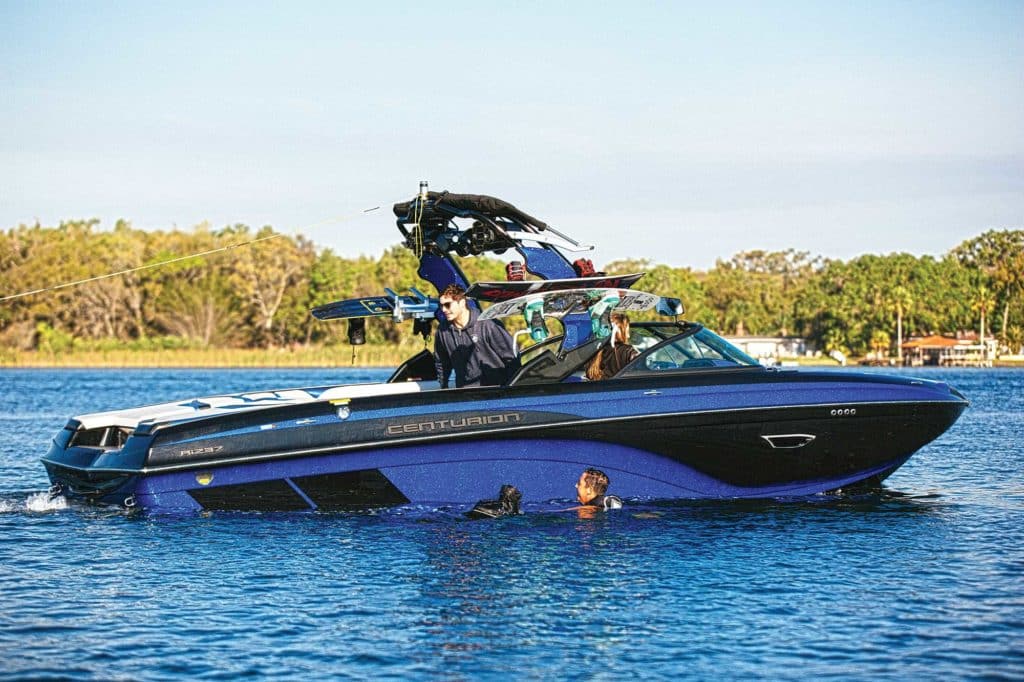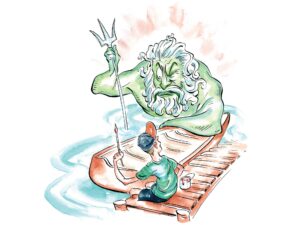
Watersports offer boaters a unique experience not available to nonboaters. That privilege comes with the responsibility to ensure safety for your crew and to extend courtesy to fellow boaters.
In this month’s Seamanship, we examine how these principles apply to the task of retrieving a skier, tuber or rider who has fallen.
The first thing to do is to remind the spotter to keep their eyes fixed on the person in the water. Positive reinforcement goes a long way in helping people stay focused. The spotter’s job is important. It can seem nonessential — until that one time a downed rider is hurt and goes under for some reason. Stay vigilant.
Don’t blast over to the downed rider at a speed that will throw a wake in their face. Make your approach from downwind; this will help you control the boat at the slow speed you should be moving at as you get close. Approaching into the wind also helps to ensure the boat will not drift over the person in the water.
Turn the engine off once you reach the person in the water. Shifting into neutral and leaving the engine running is not safe. Shut it down.
I recommend you make your approach to the downed skier, tuber or rider so that he or she is on the same side of the boat as your helm. Doing so allows you as the skipper — the person in charge — to visually monitor the boarding process and to make sure the fallen persons are back aboard the boat before you restart the engine. Eager crewmembers may shout “We got him!” when, in fact, the person is still in the water clinging to the ladder. Make sure you see the downed skier back in the boat before starting the engine.
Finally, be aware of how your wake is affecting others. In addition to other boaters, docks and shoreside properties, this applies to other watersports enthusiasts too. That is, when you pick up a downed rider, do not remain at surfing speed and make a big looping turn back toward the person in the water. This sends big rolling waves out across the lake in a different direction than those created by your surfing — the direction to which other riders in the area have adjusted their towing courses. This is especially true when you’re in smaller coves and bays.
Instead, come down to dead slow, turn the boat 180 degrees, and proceed back down the path of your wake. This will prevent big rollers from spoiling other enthusiasts’ fun. Once the rider is safely aboard, resume surfing in the established direction for the body of water you are on.









